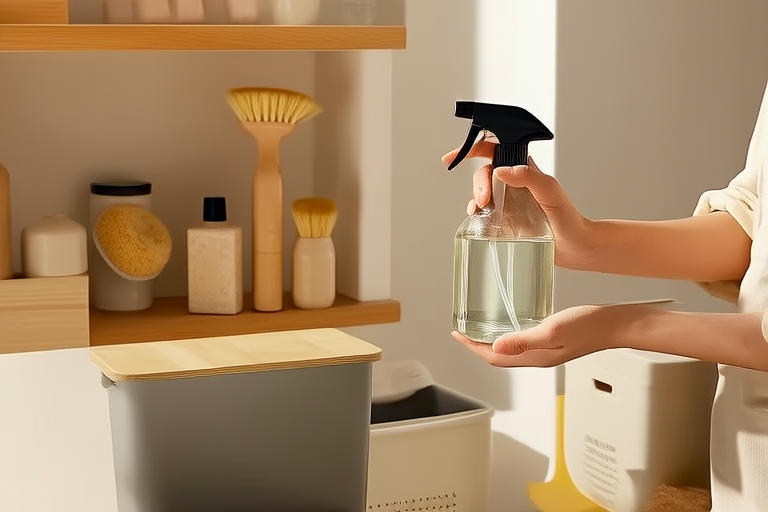Introduction: Why Make the Switch?
Switching to eco-friendly cleaning methods is not just a trend; it’s a necessary step toward reducing waste and protecting our planet. Traditional cleaning products often contain harsh chemicals that can harm both the environment and human health. By adopting eco-friendly alternatives, you can significantly reduce your carbon footprint while maintaining a clean and healthy home. This checklist will guide you through the process of making the switch, ensuring that you achieve effective cleaning without compromising on sustainability.
Understanding Eco-Friendly Cleaning Products
What Makes a Product Eco-Friendly?
An eco-friendly cleaning product is one that is biodegradable, non-toxic, and made from renewable resources. These products minimize environmental impact by avoiding harmful chemicals like phosphates, chlorine, and artificial fragrances. Look for certifications such as USDA Organic or Green Seal to ensure that the products meet strict environmental standards.
Common Eco-Friendly Ingredients
Eco-friendly cleaning products typically use natural ingredients like vinegar, baking soda, and essential oils. Vinegar is a powerful disinfectant and degreaser, while baking soda acts as a gentle abrasive. Essential oils, such as tea tree oil and lavender, provide a pleasant scent without synthetic additives. Incorporating these ingredients into your cleaning routine can help you create effective and sustainable solutions.
Practical Steps to Reduce Waste in Cleaning
Eliminate Single-Use Plastics
One of the simplest ways to reduce waste is by eliminating single-use plastics from your cleaning routine. Opt for reusable cleaning cloths instead of disposable wipes. You can also use refillable containers for liquid cleaners, which reduces the need for plastic bottles. Consider purchasing concentrated cleaning products that require less packaging.
Choose Concentrated and Refillable Products
Concentrated cleaning products offer a more sustainable option because they require less packaging and transportation. Many companies now offer refill stations where you can bring your own containers to fill up with fresh product. This not only reduces waste but also supports local businesses committed to sustainability.
DIY Cleaning Solutions
Creating your own cleaning solutions at home is an excellent way to reduce waste and save money. Here’s a simple recipe for an all-purpose cleaner:
- Ingredients: 1 cup white vinegar, 1 cup water, 1 tablespoon baking soda, 10 drops of essential oil (optional)
- Instructions:
- Mix the vinegar and water in a spray bottle.
- Add baking soda for scrubbing power.
- Include essential oils for a fresh scent.
- Shake well before each use.
This solution can be used on various surfaces, including countertops, floors, and windows.
Transitioning Your Cleaning Routine
Assess Your Current Cleaning Supplies
Before making the switch, take stock of your current cleaning supplies. Identify which products are harmful to the environment and consider replacing them with eco-friendly alternatives. This assessment will help you understand what changes are necessary and allow you to plan your transition effectively.
Gradual vs. Immediate Transition
Decide whether you want to make the switch gradually or immediately. A gradual transition allows you to experiment with different eco-friendly products and adjust your routine accordingly. On the other hand, an immediate transition can be more impactful and may encourage you to stick with your new habits longer.
Educate Yourself and Others
Knowledge is power, especially when it comes to making informed choices about the products you use. Stay updated on the latest developments in eco-friendly cleaning and share this information with friends and family. Encouraging others to adopt sustainable practices can have a ripple effect, leading to broader positive change.
Case Studies and Real-Life Examples
Household Success Stories
Many households have successfully transitioned to eco-friendly cleaning methods and reported significant improvements in their health and environment. For instance, the Smith family in California switched to natural cleaning products after noticing skin irritations from traditional cleaners. They now use vinegar and baking soda for most tasks and have seen a noticeable reduction in allergic reactions.
Business Initiatives
Several companies have also taken steps to promote eco-friendly cleaning. For example, Method, a popular cleaning brand, uses plant-based ingredients and recyclable packaging. Their commitment to sustainability has earned them recognition and loyalty from environmentally conscious consumers.
Conclusion: Taking Action
Switching to eco-friendly cleaning methods and reducing waste is a worthwhile endeavor that benefits both the planet and your health. By following this checklist, you can make informed decisions about the products you use and contribute to a more sustainable future. Start small, educate yourself, and gradually incorporate eco-friendly practices into your daily routine. Remember, every little change counts, and together we can make a big difference.
Action Plan:
- Assess your current cleaning supplies and identify areas for improvement.
- Choose eco-friendly alternatives and try out DIY cleaning solutions.
- Eliminate single-use plastics and opt for refillable products.
- Stay informed about sustainable cleaning practices and share your knowledge with others.
By taking these steps, you’ll be well on your way to a cleaner, greener home!
